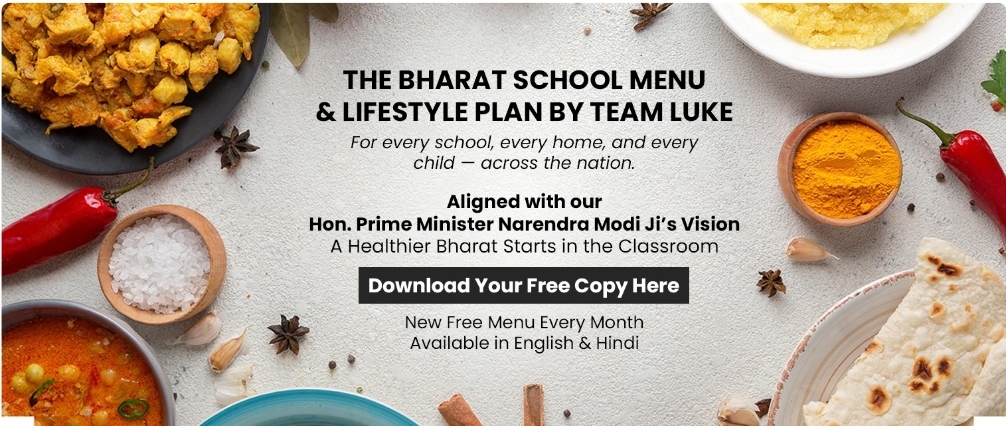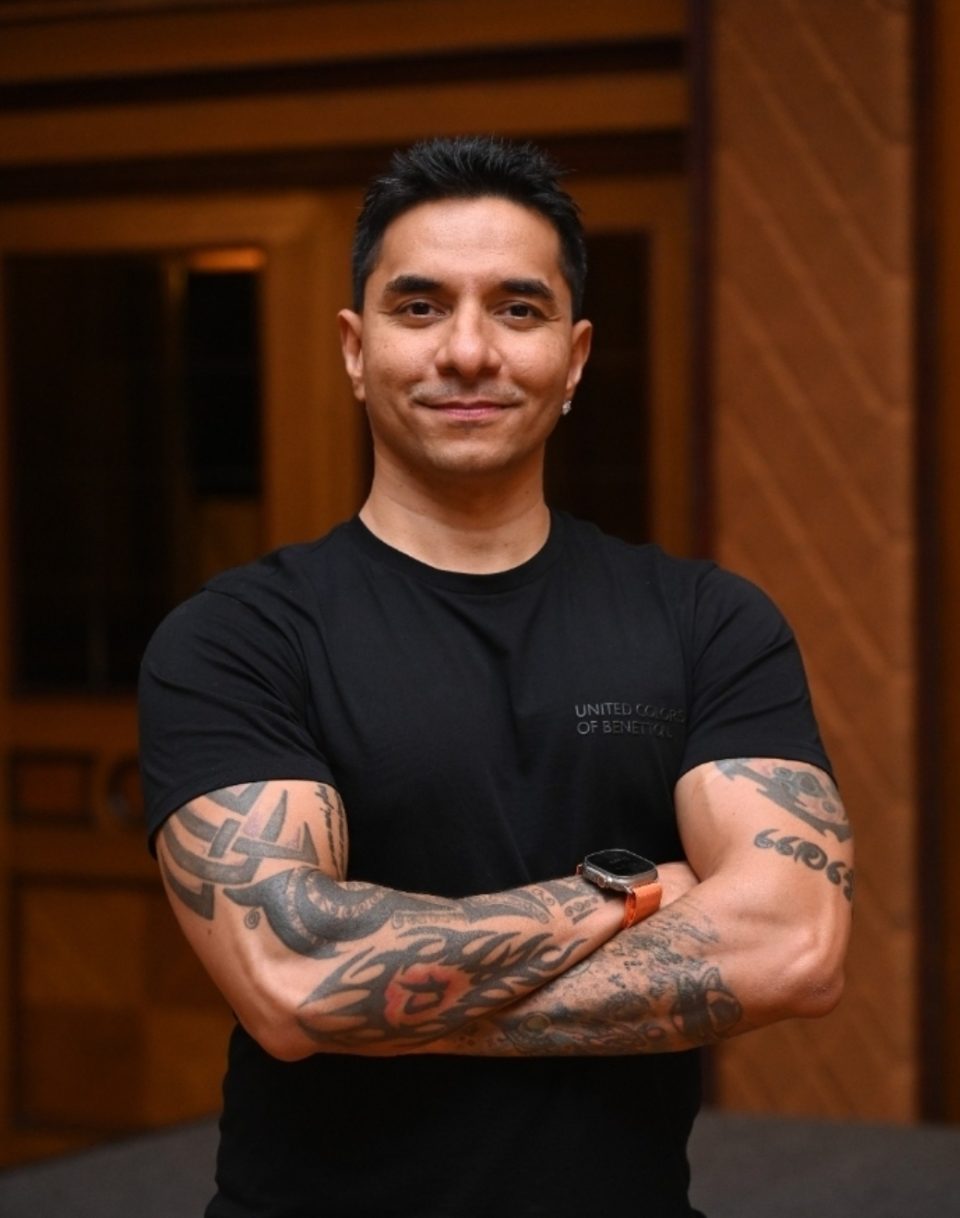Luke Coutinho, India’s leading Integrative Lifestyle Expert and a Fit India Ambassador, has always championed holistic well-being. In a country grappling with rising childhood health issues, his latest initiative—the Bharat School Menu and Lifestyle Plan—is a revolutionary response inspired by Prime Minister Narendra Modi’s vision for a healthier India. Launching on May 1, 2025, this year-long plan seeks to lay the foundation of good health by transforming how young Indians eat, move, and live—starting from the grassroots level.
In this exclusive CXQuest.com interview, Luke dives deep into how thoughtful customer experience—in this case, directed toward India’s children and their caregivers—can not only drive impact but also empower sustainable behavior change across generations.
Bharat School Menu Launch
Q1. Luke, what inspired you to launch the Bharat School Menu and Lifestyle Plan?
LC: As someone deeply committed to preventive health and integrative nutrition, I’ve spent years witnessing how lifestyle diseases are beginning earlier and earlier in children. We see obesity, insulin resistance, digestive issues, and emotional imbalances in age groups that should be thriving. As a Fit India Ambassador appointed by our Honourable Prime Minister, this plan is one small step in support of his larger vision: to help build a healthier Bharat, starting with our schools and children. It’s not a campaign. It’s our responsibility.
Q2. How do you see customer experience translating in the context of children and their caregivers in this initiative?
LC: Experience here means accessibility, trust, and cultural familiarity. We’ve created something that feels doable, not overwhelming—whether you’re a parent packing a lunchbox, a teacher helping with a tiffin break, or a caregiver in a community school. The goal is not to add pressure, but to make balanced nutrition feel possible again, using ingredients most homes, kitchens, canteens already have.
Q3. What role did your visit to the Anganwadi Centres play in shaping this vision?
LC: That visit was deeply grounding. I saw how much care goes into supporting children at the grassroots—despite limited resources by self-motivated women. I was moved by the real-time tracking efforts, the dedication of Anganwadi workers, and the potential for early nutrition to shape a child’s life. It affirmed for me that any solution we build must be simple, practical, and respectful of local wisdom. That’s exactly what this plan aims to be.
No Customers, This Isn’t a Business
Q4. How do you define ‘customer’ in this initiative—are they the children, parents, schools, or all of them?
LC: This initiative is for every Indian child. But to reach them, we must support those around them—parents, schools, Anganwadi workers, teachers, and caregivers. They are not “customers.” This isn’t a business—it’s a voluntary offering made freely available every month to those who nurture and raise our next generation. Our role is simply to support them with tools and ideas that make nourishment easier and more consistent.
Q5. What are the biggest CX challenges you faced while building this plan, especially across different regions and dietary cultures?
LC: India’s cultural and culinary diversity is vast—and beautiful. But it also meant we couldn’t take a one-size-fits-all approach. The real challenge was to offer guidance that holds strong nutritionally, but remains flexible regionally. So instead of fixed recipes, we offered food categories, principles, and options that can be adapted locally. Whether it’s bajra in Rajasthan or ragi in Karnataka, the idea is to let India nourish India.
Q6. How does the plan make healthy eating feel accessible and desirable to children?
LC: Children don’t need trends—they need food that tastes good, feels good, and supports their growth. The Bharat School Menu is designed around familiar foods—dal, rice, vegetables, chapati, seasonal fruit—presented in a balanced way. The idea is not to change what families eat, but how it’s combined and served. We’ve added variety, colours, and practical tiffin ideas that appeal to both children and caregivers. This is how we slowly change habits, without creating resistance.

Continuous Feedback
Q7. How do you ensure continuous feedback from stakeholders like parents, teachers, and health workers?
LC: We’ve kept this dialogue open. Many of our wellness coaches and partners work closely with schools and families, and we listen carefully to their inputs. So far, we are seeing how schools and parents are embracing this so beautifully. We have had teachers, principals and school authorities reaching out to us and sharing how they have included these menus in their infrastructure, and are sharing ideas on how to further expand this.
We also encourage feedback via our platform each month when the new menu is released. This is not a static plan—it’s a living one, shaped by the real needs of real families.
Q8. Can you explain the tech and tracking elements being used to improve engagement and outcomes?
LC: Nothing complex. Our goal is not surveillance—it’s empowerment. For communities using government platforms like the Poshan Tracker, we aim to keep our tools complementary. For others, we share simple checklists or observation ideas that teachers and parents can use if they wish. The technology here is in the intent: regularity, awareness, and gentle correction—not measurement.
Q9. What does success look like for the Bharat School Menu over the next 12 months?
LC: Success isn’t a viral metrics. If this initiative helps even a few thousand families rethink how they build their child’s plate, we’re moving in the right direction. If schools and communities begin to use the framework as part of their regular planning—even in part—we’ve succeeded. We hope to see growing awareness around balanced, local, seasonal nutrition—not because we pushed it, but because it made sense.
Advice to CX Leaders
Q10. What advice would you give to CX leaders in the wellness and health sectors who want to drive grassroots change?
LC: Stay close to the ground. Listen more than you speak. Don’t overcomplicate what people already understand intuitively. Wellness doesn’t need marketing—it needs humility, consistency, and respect for what already works in our homes and cultures. If you truly want to create change, remove yourself from the centre of the solution and ask: how can I serve quietly, but well?
As Luke Coutinho rightly points out, customer experience isn’t always about selling a product—sometimes it’s about delivering trust, empowerment, and transformation. The Bharat School Menu and Lifestyle Plan is not just a food and health blueprint; it’s a movement. One that centers India’s children as key stakeholders in shaping a healthier tomorrow. In doing so, Luke redefines CX as a force for real, sustainable change—where empathy meets execution and vision meets action.

